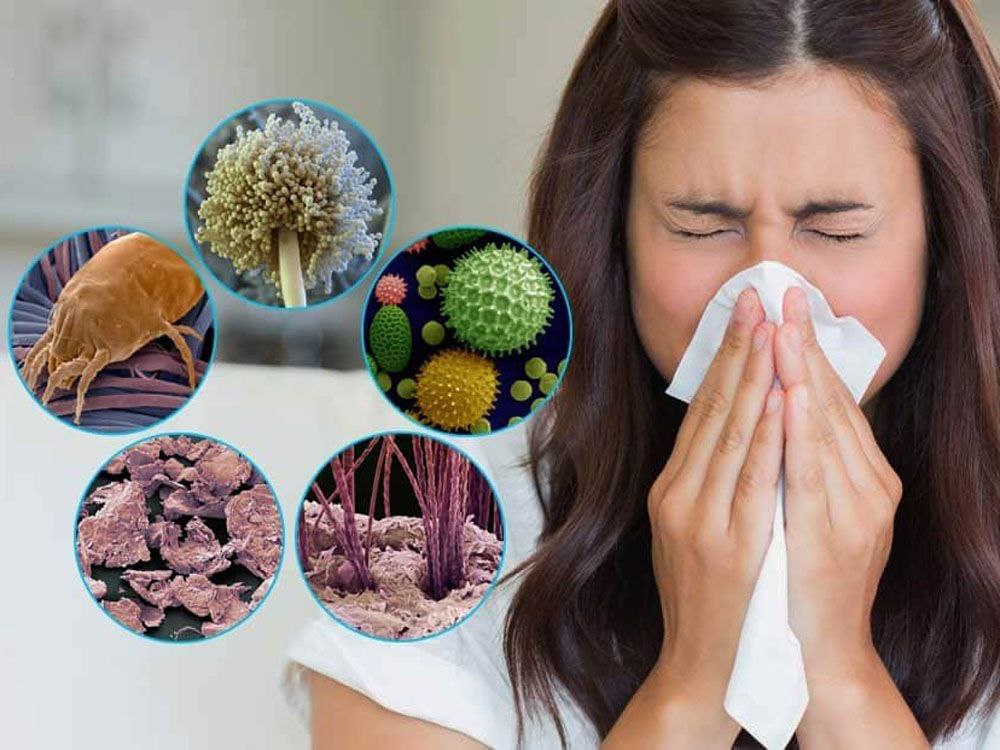Allergy



What is an Allergy?
An allergic reaction occurs when your immune system overreacts to a harmless substance known as an allergen. This leads to symptoms like sneezing, running nose, cough, nose block, itching, rashes, and shortness of breath.
Common Allergens – Dust mites, Pollen, food, mold (Fungal spores), Animal dander, insect venom, and medications
Allergies can manifest in various forms such as asthma or Allergic bronchitis, Allergic rhinitis, Hives, Eczema/Atopic dermatitis seasonal allergies, food allergies, Anaphylaxis, and Drug allergies.
Symptoms of allergies can range from mild to severe and may affect different parts of the body. It can affect the nose, eyes, sinuses, throat, lungs, stomach, bowel, and skin.
Brain allergies do exist.
As per the WHO, the prevalence of allergic diseases is rising dramatically worldwide. The prevalence of allergic rhinitis in India ranges between 20% and 30%, affecting a significant portion of the population. Studies have shown an increasing trend in the prevalence of allergic rhinitis in India over the years, particularly among children. Additionally, the coexistence of allergic rhinitis and asthma is common in Indian patients, with a prevalence of around 65.24%. This coexistence highlights the need for early diagnosis and guideline-based management of both conditions in Indian patients with asthma and allergic rhinitis.
How do Allergy develop?



What Are the Symptoms of an Allergic Reaction?
Common symptoms of an allergic reaction to inhaled or skin allergens include:
1

Itchy, watery eyes
2

Itchy, runny nose
3

Feeling tired or ill

4

Sneezing
5

Rashes
6

Hives (a rash with raised red patches)

What are the different types of Allergies?
Allergy related diseases can be classified based on the target organ involvement. Some common types are mentioned below
1

Nose – allergic rhinitis
2

Skin -Dermatitis
3

Systemic-Anaphylaxis
4

Ear –otitis media

5

Lungs -Asthma
6

Eye -Conjunctivitis
7

Gut -Food allergy

What are the Risk factors for Allergy?
Common symptoms of an allergic reaction to inhaled or skin allergens include:
1

Family history of allergies
2

Animal contact primarily cat
3

Passive smoking
4

Small family size
5

Western life style

6

Serum IgE>100 IU/ml before age of 6 years
7

Dust mite exposure
8

Eczema
9

Early use of antibiotics
10

diet

Genetics of Allergy
1

If one parent is atopic >= 50 % risk
2

If both parents are atopic >=66 % risk

3
No family history < 20%
A positive family history is the single most important factor in predicting the development of allergies.
How Allergy is Diagnosed?
A detailed history is taken by an experienced physician is of utmost important. As your doctor selects the relevant allergy test based on the clinical history.
Physical examination is also done to confirm the diagnosis.
Allergy Skin testing
Allergy skin test is confirmatory, highly sensitive, reproducible, rapid and cost effective method to screen existing IgE sensitivities that may be responsible for clinical symptoms.
How skin prick test is done?
Skin surface is cleaned with alcohol and dry naturally
Marking is done on the area of skin test site with pen
Then application of a small drop of antigen on the site
A sharp instrument (lancet, hypodermic needle) is passed through the drop, skin is gently lifted, and creating a small break through which extract penetrates.
Interpretation is done after 20 minutes

Factors affecting Skin Prick Test
*Skin test can be performed even at one month of age
1

Age-infancy or old age
2

Race-wheeling more in blacks
3

Seasonal variation pollen allergy
4

Other condition-diabetic neuropathy

5

Sex -no difference
6

Circadian rhythm peak in late evening
7

Skin condition-skin eczema


